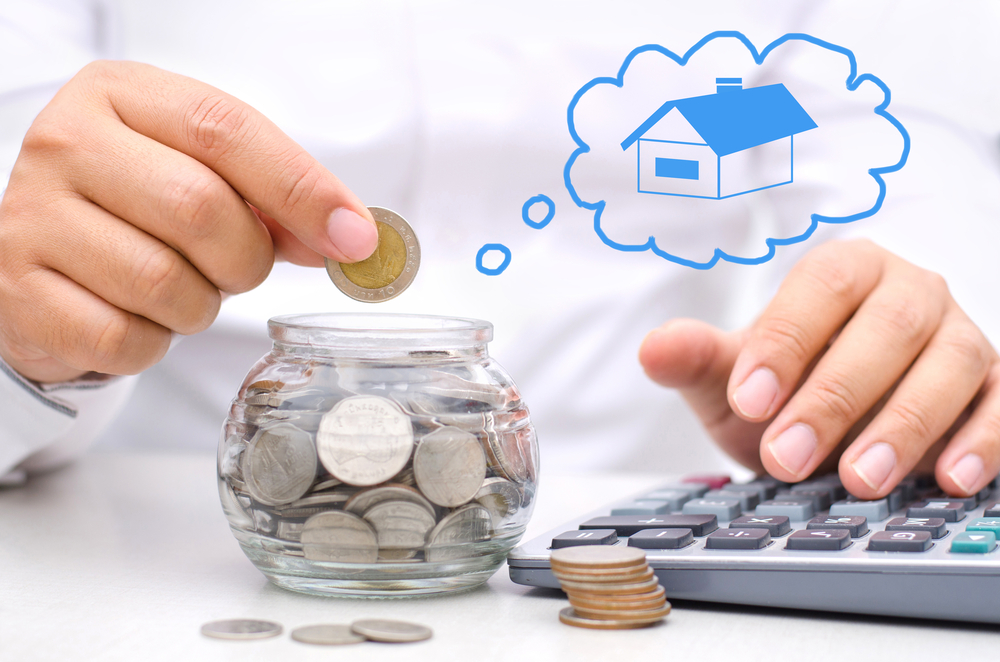
The standard guideline for a down payment on a new home is anywhere from 5%-20% – but that’s a large amount of money for many individuals, especially first-time homebuyers.
A 20% down payment is common because it is the amount homebuyers need to pay to avoid mortgage insurance, which can cost up to 4% of the mortgage amount.
While this number is obviously ideal, paying 20% is not necessary. Even as the cost of new homes continues to rise, the average down payment for first-time homebuyers rests around 6% while some putting down as little as 5%.
Overall, how much you put down on a house depends on your finances and credit score. Let’s look at the pros and cons of going with a 5% down payment:
When it comes to buying a home, there are options when it comes to how much money you put down. Here are the benefits of a 5% down payment:
If you don’t have a lot of money saved for a down payment, it’s easier to purchase a new home with a smaller down payment. You may have excellent credit and a great job history but don’t have the savings for a down payment.
And if you do have a healthy savings, paying a 5% down payment will not drain your account. This frees up money to deal with the other costs associates with buying a home such as closing fees and home inspections – not to mention emergencies and repairs.
While you may be tempted to spend as little money as you possibly can on a down payment, doing so may not be beneficial to your situation. Here are some reasons you should consider making a larger down payment:
Buying a home is an investment because you have the opportunity to build equity. Equity is the difference between the current market value of a home and the amount you owe on a mortgage.
When you only make a 5% down payment, this may lead to a lack of immediate equity in your home. This means that, if you sell your house within 5 years of purchasing it, it’s unlikely you are going to make any sort of profit.
So if you plan on putting down a small down payment, you should plan on staying in the home for at least 5 years in order to cover the expenses of selling your home.
You’ll Have a Lower Interest Rate
Yup, it’s a common misconception that if you put down more money, your interest rate will be lower. This is the oposite of what the reality is. If you are putting less than 20% down on your home, your mortgage is insured. This takes some risk off the mortgage lender, and places it onto the mortgage default insurer (CMHC, Sagen, Canada Guarantee). This results in lower rates due to the overal risk being spread out over multiple entities.
As we mentioned, when you put anything less than 20% down on a home, you will be required to pay mortgage insurance. This is a specific amount of money that is paid monthly or upfront paid to the lender to protect the mortgage in case you default on your loan.
The additional cost for mortgage insurance can be anywhere between 2.8%-4%.
When you put less money down on a mortgage, you can expect to pay higher payments each month. This is important to consider since, while you think you are saving money by not putting down a higher down payment, you will end up paying more per month.
If you’re not sure how to determine the down payment amount to put down on a new home, the first step is to look at your savings and investments and add your available funds. You should keep in mind how much you want to set aside for other savings goals, moving costs, and renovations to your new home.
Once you have that amount figured out, set aside an amount for emergencies. The result is the maximum amount you have available you have to put toward your mortgage.
Keep in mind that there are closing costs associated with purchasing a new home. This amount depends on the price of the home, the down payment, the type of mortgage, and legal fees. Speaking to a mortgage specialist will help you get a rough idea of this amount.
From there, you can determine how much you can contribute to a down payment. Using the advice above, decide if now is a good time to buy a home or if you should work on building more of savings.
When it comes to getting a mortgage, the process can be confusing. From choosing what type of mortgage to get to the rules and paperwork, it’s best to approach buying a home with as much knowledge and information as possible.
Dominion Lending Centres Mortgage Force is a locally-operated and family-owned Dominion Lending Centre office in Edmonton. Our team is dedicated to meeting your unique needs.
Regardless of how much you put down, It is recommended that you get a mortgage pre-approval before buying a home so get a better idea of how interest rates relate to down payments.
We understand that purchasing a home is both exciting and comprehensive. Let’s talk about your mortgage options today!
Posted by MortgageApplyOnline On August 27th, 2021